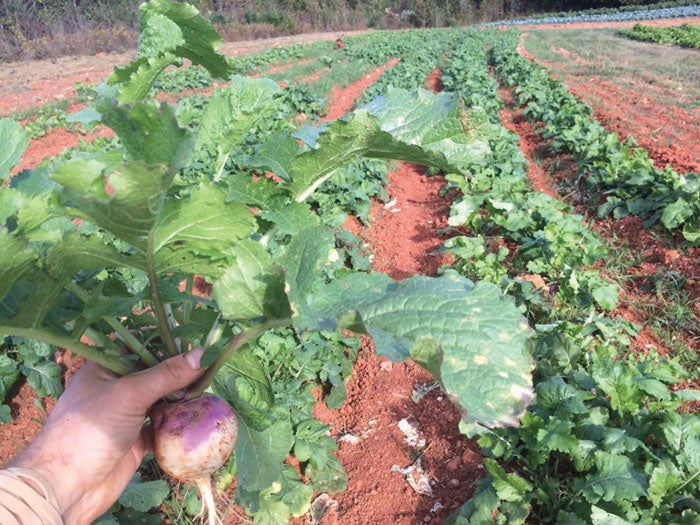It’s time to prep fall gardens
Published 12:00 am Friday, July 27, 2018

- Submitted photo Purple-top turnips can provide edible greens as well as roots late into the winter. Left as an overwhelming cover crop, they will also areate the soil for next spring.
Hello Rowan County, it’s a genuine honor to be your new horticulture extension agent. I am excited and eager to get to work and can’t wait to meet all you fellow farming enthusiasts.
Stepping into this role with the Cooperative Extension Service is a lot like planning a new garden. Right off the get-go, we have to access the environment in which we hope to cultivate success. From there we begin to plan the what, when and where of our efforts in order to be sustainably successful.
Like farming, the possibilities for the Cooperative Extension Service to work with residents of Rowan County are limited only by our creativity. Again, like farming, no matter the scale, we must pick and choose wisely where to cast our efforts. I have decided to focus much of my programming over the next year towards helping small-scale producers increase yields in their home or market gardens.
Too many times, folks assume that high yield farming is only for the commercial growers using the latest chemical prescriptions. But in reality, much of their success comes from ever-improving cultural practices that they have fine-tuned throughout their career as farmers.
Regardless of how much we choose to plant, the same concepts can be applied to growers large and small, producing better yields for our efforts. For the folks with a seasoned, green thumb, we want to embark on an adventure to take your productivity to the next level.
We can always save time and effort with improved growing practices and we live in an amazing era where the resources needed to succeed are within our reach.
With that said, let’s take a snapshot of where we are in this year’s growing season. Luckily, North Carolina’s climate allows for amazing abundance in the spring, summer, fall, and, if managed correctly, winter. For growers who are in the midst of an abundant summer harvest, it is easy to disregard the opportunity that lies ahead to prep ground and plan a brand new season of vegetables.
Driving around, I enjoy looking at vegetable plots in folk’s yards. Many times we see beautiful gardens in the late spring, fruit on the vine in July, and by August vegetable plots too often look like a jungle of diseased plants and grasses producing seed heads ensuring next season’s weed pressure.
So here is an idea that can benefit our growing plots and allow for more production on less ground. As soon as our summer plantings have passed their prime and we no longer benefit from their presence, move them out and clear the ground.
August is a prime time to sow greens, carrots, beets, turnips and transplant broccoli, cabbage, cauliflower and Brussels sprouts (there are many more goodies to name and a comprehensive list is provided by NCSU through the following website address: https://content.ces.ncsu.edu/growing-a-fall-vegetable-garden).
Many times our fall gardens are duplicates of what we chose to grow in the early spring, but there are some advantages to growing these vegetables in the fall versus the springtime. Benefits include pleasant temperatures to work in (think of it as a reward for that hot August clean-up and ground prepping job mentioned earlier), and prolonged harvest into the winter months for many varieties.
For the past two winters I have harvested greens, spinach, cabbage, broccoli and Brussels sprouts well into January. Those same varieties planted in the spring would have only been harvested a couple months before the summer heat settled in. Once established, it is very satisfying to have a cold tolerant salad bar in your backyard to nibble on at your discretion. So get out there and experiment a little this fall, come November you may be pleasantly surprised.
Michael O. Fine is the horticulture and local food agent with North Carolina Cooperative Extension-Rowan County Center, 272 -A Old Concord Road, Salisbury, NC 28146. 704-216-8970


